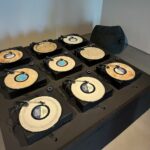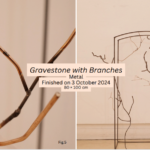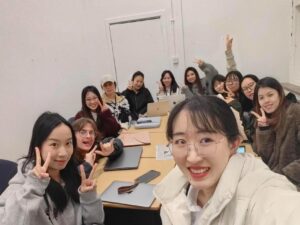
Sensory Engagement and Refining the Exhibition Framework
Curatorial Progress Update
In Week 10, I made several key adjustments to my exhibition plan to enhance feasibility and audience experience. To reduce venue rental costs, I shortened the exhibition duration to one week. I also updated my artist list, now planning to feature works by students from the CAT and CAP programs at Edinburgh College of Art (ECA), aiming to introduce diverse and experimental voices.
Moreover, I developed new interactive components, including:
-
Digital Tombstone Projections – using visuals to represent names, dates, and symbolic motifs of the deceased;
-
Final Message Cards – inviting visitors to write personal farewells, which will later be digitized and archived as part of the exhibition record;
-
Scent Stations – using incense (from Chinese funerary rituals), marigolds (from Día de los Muertos), and other culturally symbolic scents to evoke emotional and sensory reflection.
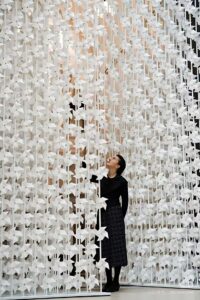
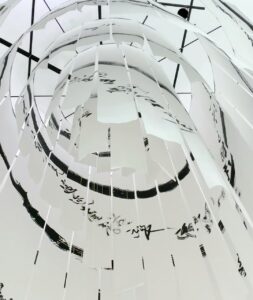
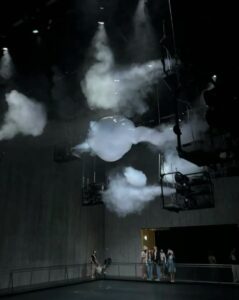
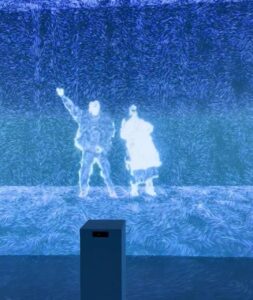
These installations aim to offer a multi-sensory, ritualistic experience that deepens the audience’s contemplation on death.
Collective Reflection & Peer Learning
During our Curatorial Sharing & Discussion session, I focused on exploring how spatial design and interactive strategies can shape the curatorial narrative. I drew inspiration from immersive exhibition cases like Rain Room and TeamLab Borderless, where digital and sensory environments create a ritual-like atmosphere. These references helped me further develop the idea of a VR Cemetery Walkthrough, where audiences navigate symbolic color zones and respond to mortality prompts.
In presenting my curatorial text draft, peers encouraged me to refine the language so that symbolic meanings—especially cross-cultural metaphors of death—are effectively conveyed without becoming too abstract. This feedback reminded me to balance conceptual ambition with audience clarity.
Challenges & Adjustments
While I’ve identified the Creative Scotland Individual Open Fund as a potential source of support, I still need to better understand the application timeline and requirements. On the technical side, I’m yet to confirm a VR developer, but I’ve begun conversations with contacts at ECA’s digital media department.
Promotion remains another open question. I’m considering whether to partner with local community groups for outreach or focus more heavily on social media campaigns, depending on the target audience and budget.
Summary
This week’s work reaffirmed the importance of audience engagement—not simply as participation, but as an active interpretation of curatorial ideas. Through a combination of sensory triggers and symbolic frameworks, I aim to translate the conceptual theme of “The Colour of Death” into an emotionally resonant experience.
Moving forward, I will prioritize finalizing the VR execution plan, refining the curatorial text, and organizing a team of volunteers. The group’s feedback continues to be a vital part of my iterative process, reminding me to stay grounded in both practical realities and poetic ambition.
Bibliography
-
Random International. Rain Room. Exhibition. London: Barbican Centre, 2012.
https://www.random-international.com/rainroom -
TeamLab. teamLab Borderless. Exhibition. Tokyo: MORI Building DIGITAL ART MUSEUM, 2018–2022.
https://www.teamlab.art/e/borderless/ -
Bille, Mikkel, and Tim Flohr Sørensen. “An Anthropology of Luminosity: The Agency of Light.” Journal of Material Culture 22, no. 2 (2017): 157–173.
https://doi.org/10.1177/1359183517699245 -
Hallam, Elizabeth, and Jenny Hockey. Death, Memory and Material Culture. Oxford: Berg, 2001.
-
Woodward, Ian. Understanding Material Culture. London: SAGE Publications, 2007.
-
Creative Scotland. “Open Fund for Individuals.” Accessed March 2025.
https://www.creativescotland.com/funding/funding-programmes/open-fund-for-individuals -
Klass, Dennis, Phyllis R. Silverman, and Steven L. Nickman, eds. Continuing Bonds: New Understandings of Grief. Philadelphia: Taylor & Francis, 1996.

